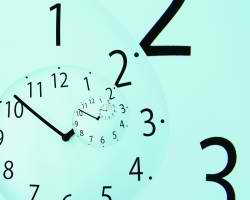Smartphones which change time on their own are the new alarm clock of the day, but those of us old-fashioned people will have to remember to move the little hand one hour ahead this Saturday night.
It is time again to lose an hour of sleep so we can gain an hour of daylight. Daylight Saving Time starts Sunday at 2 a.m. and that means the sunny days of summer are coming soon.
But why do we observe Daylight Saving Time from March to November?
Common belief is that by gaining an hour of daylight the country is more productive, using less light and saving energy.
However a 2008 study from the University of Santa Barbara found that there was little evidence showing any energy savings, and in some cases daylight savings actually increased energy consumption. Indiana could potentially cut $9 million per year from household energy spent if they stopped observing Daylight Saving Time, according to the study.
The California Energy Commission finds that Daylight Saving Time cuts 0.1 to 0.3 percent from the state’s energy consumption. However the energy commission also suggests that observing daylight saving in winter would increase energy savings to 0.5 percent.
The origins of the daylight saving concept are centuries old considering that people have been waking with the sunrise forever, but it is fairly young as a government practice.
Benjamin Franklin wrote a satirical essay to the Journal of Paris more than 200 years ago suggesting Parisians institute daylight saving time to save on the cost of lamp oil and candles, but it wasn’t until Germany enacted an official daylight saving time during World War I that the United States and Europe adopted the practice as part of their war strategies.
It was called Fast Time when daylight savings was adopted by the U.S. in 1918, only to be repealed seven months later. Daylight saving initiatives were later created again during World War II, but it wasn’t until the Uniform Act of 1966 that Daylight Saving Time was officially adopted by the U.S.
So it may not be all it’s cracked up to be. It may not save on the cost of lamp oil. But here in coastal California, Daylight Saving Time means an extra hour of surfing and sunsets.















